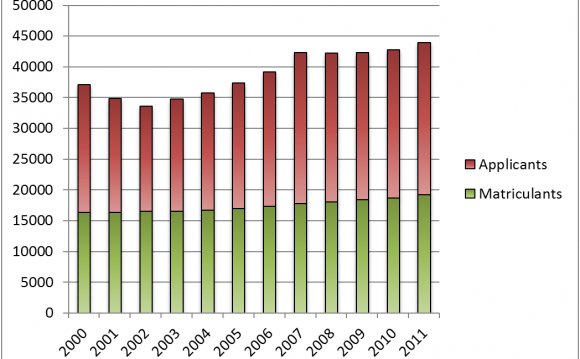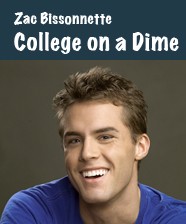
 The College on a Dime series is written by Zac Bissonnette, a junior at the University of Massachusetts, Amherst. His book College On a Dime will be published by Penguin in the fall.
The College on a Dime series is written by Zac Bissonnette, a junior at the University of Massachusetts, Amherst. His book College On a Dime will be published by Penguin in the fall.
Think community college is nothing more than a fifth year of high school for kids who couldn't get into four year colleges? Try telling that to Latisha Wilson (pictured below), who attended Manchester Community College in Connecticut before transferring to Amherst College - the number two liberal arts college in the country, according to US News & World Report - in 2006.
Wilson once had to remove her younger sister from their mother's home because she could no longer care for her. She also worked as a manicurist, a hairdresser, and a makeup artist to help pay for her living expenses while attending school, and says that there were times in her life where she did not know where she would live.
After "bombing" her SATs in high school, she felt that Manchester Community College would be a good bridge to a four-year college. There, she says she had a great experience with the professors and counselors. She was also able to qualify for a prestigious scholarship available only to community college transfers: the Jack Kent Cooke Foundation's Undergraduate Transfer Scholarship, which gave her $30, 000 per year for three years. In all, she estimates that she saved as much as $170, 000 by starting at a community college.Now she's a student at Yale Medical School, where she also has a full scholarship that actually pays her $50, 000 per year to take classes. She says she interviewed at a lot of top medical schools, and the community college credits on her transcript were "never a question."
Still, there was a lot of peer pressure to avoid those schools, so much that she "almost listened" to the people who told her 4-year colleges would frown upon her tenure at community college. "But I got here so I don't think they look down upon me too much, " she notes.
The "small class sizes and close-knit community" of Columbus State also came in handy. "All of my letters of recommendation for medical school came from Columbus State professors, " she says.
And as inspiring as these students are, their stories are hardly unique - at least the community college part:
Jeremy Hyman, who co-authored Professor's Guide to Getting Good Grades in College with his wife Lynn Jacobs, an art history professor, says that community colleges can be a great option for students interested in a more supportive atmosphere with smaller classes. He notes that community college professors are often more accessible - and since there are no grad students, classes are actually taught by them instead of by graduate student teaching assistants, as is the norm at many of the most prestigious 4-year universities.Perhaps the best perk to starting at a community college, especially for marginal students, is that it provides a low-risk way to try out college without heaping on loans. Marty Nemko, the author of Barrons' All-in-One College Guide, reports that "among college freshmen who graduated in the bottom 40% of their high school class [and enrolled in a four-year program straight out of high school], 76 of 100 won't earn a diploma, even if given 8 1/2 years."
With odds like those, who in their right mind would shell out tens of thousands of dollars for a four-year school? Community college is a fantastic and affordable way to start college - and if your student is up to the challenge, graduating from a four-year college is certainly within reach.
Hyman suggests that students who are attending a community college and planning to transfer should maintain communication with admissions people at the school they're planning to transfer to - and consult with the department they'll be majoring in to see what classes they're taking will transfer. Public colleges and universities generally have articulation agreements with in-state community colleges, and many have websites that allow you to see what credits will transfer.
To avoid confusion, "consult the people who are receiving you rather than the people who are sending you, " says Hyman.
And remember: What's the difference between the diploma of a student who graduated from an elite college after going there for four years and the diploma of someone who transferred from a community college?
Nothing. Rick Perry attended Santa Rosa Junior College in Santa Rosa, CA in the late 1970s before transferring to the University of California, Berkley. He picked Santa Rosa because of the small classes and felt that the faculty was "more dedicated to teaching than to research."
There, he graduated second in his class - and went on to law school where he finished in the top 10%. Was starting at a community college the right decision?
"Absolutely", he says. He suggests that students who are considering community college pay careful attention to transfer requirements and "treat it like college and not a continuation of high school."
RELATED VIDEO












